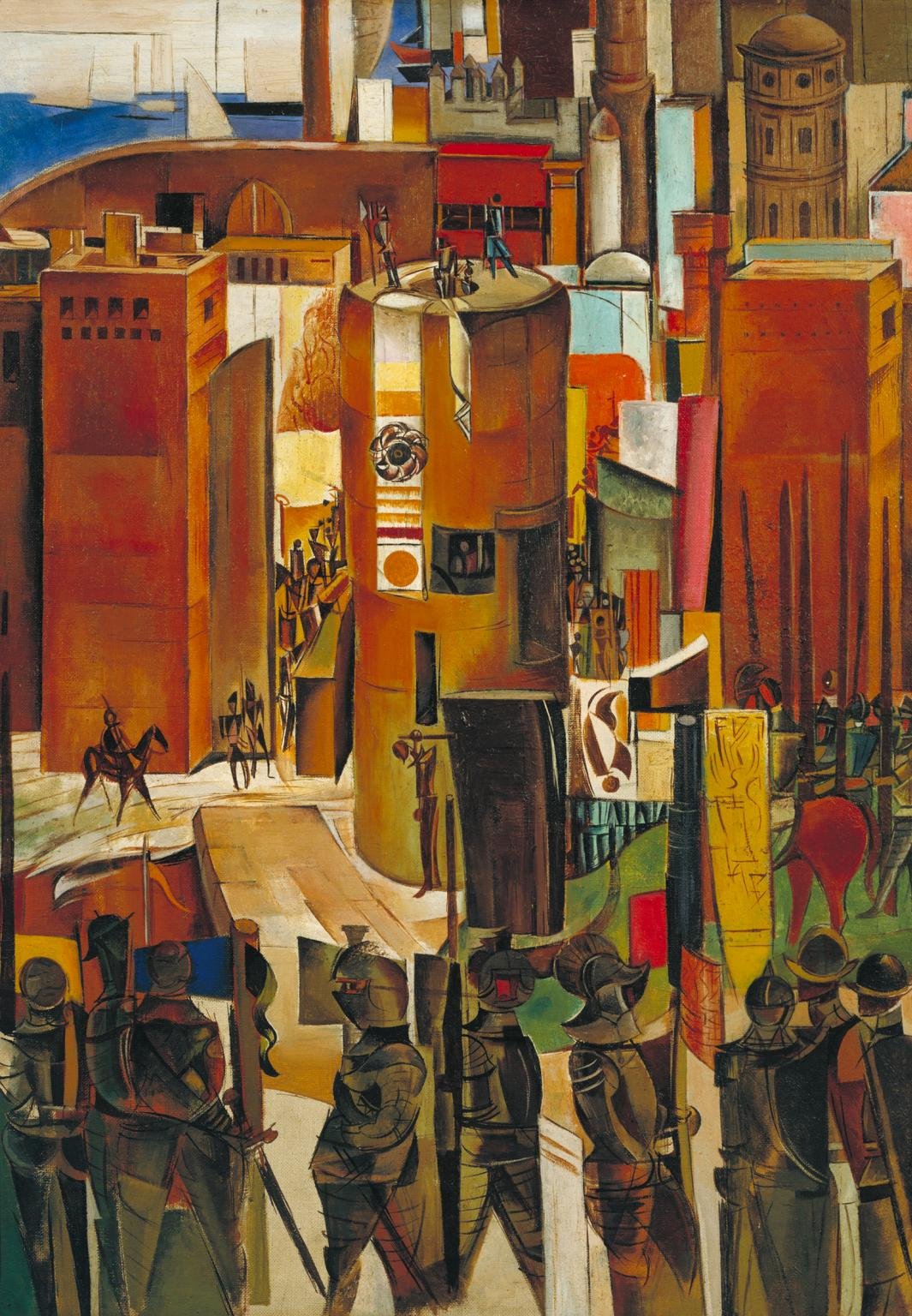VORTICISM
1914-1920
Formed by writer/artist Wyndham Lewis in 1914, Vorticism was a European modern art movement running in parallel to Futurism in Italy. The name Vorticism was derived from the idea that the tumultuous modern world should be viewed through the prism of a spiraling vortex.¹ Writer Ezra Pound coined the phrase, explaining: “The Vortex is the point of maximum energy. It represents, in mechanics, the greatest efficiency.”
The key difference between Futurism and Vorticism is their view of modernism. Where Futurism celebrated the Machine Age, the Vorticists, in keeping with its British roots, took a more stoic view. Vorticism was much more based on form and less on emotion. Lewis, himself, described Vorticism as a mix of Cubism and Futurism. It maintained many of the shapes found in Cubism, while taking on the Machine Age subject matter of Futurism. It should be noted that Lewis was a close friend of Futurism’s Italian founder, Tomasso Marinetti.
The Vorticists world view was published in the only two issues of their magazine BLAST! These odd literary volumes were essentially lists of everything the authors hated (BLAST) and loved (BLESS). Generally, all things Victorian fell under the BLAST column, while all things modern, friendly or beloved by the author were listed in the BLESS columns. Often the same thing appeared under both headings:
For example one passage reads: “Curse the flabby sky that can manufacture no snow but can only drop the sea on us in drizzle.” It goes on: “Blast France, Blast England, Blast Humour, Blast the years 1837 to 1900.” In one sentence the whole of the Victorian era is dismissed. And then conversely we read: “Bless England, Bless England for its ships which switchback on blue, green and red seas.”²
The Vorticists were a perplexing lot, much as their leader Wyndham Lewis was a perplexing personality. At times he was a virulent anti-semite and at others a dedicated modernist. He embraced the Nazi Party and its message until faced with the consequences of WWII. Vorticism, itself, was modern art to its very core. Minimalist in its aspirations and maximalist in its pretensions. The movement essentially crumbled in the wake of the horror of World War I which exposed the downside of the Machine Age.
¹ The Art Story bio of Wyndham Lewis as published on theartstory.org.
² From a picture essay “BLAST! The radical Vorticist Manifesto” by Chris Stephens writing for the Tate Modern and appearing on Tate.org.uk.







